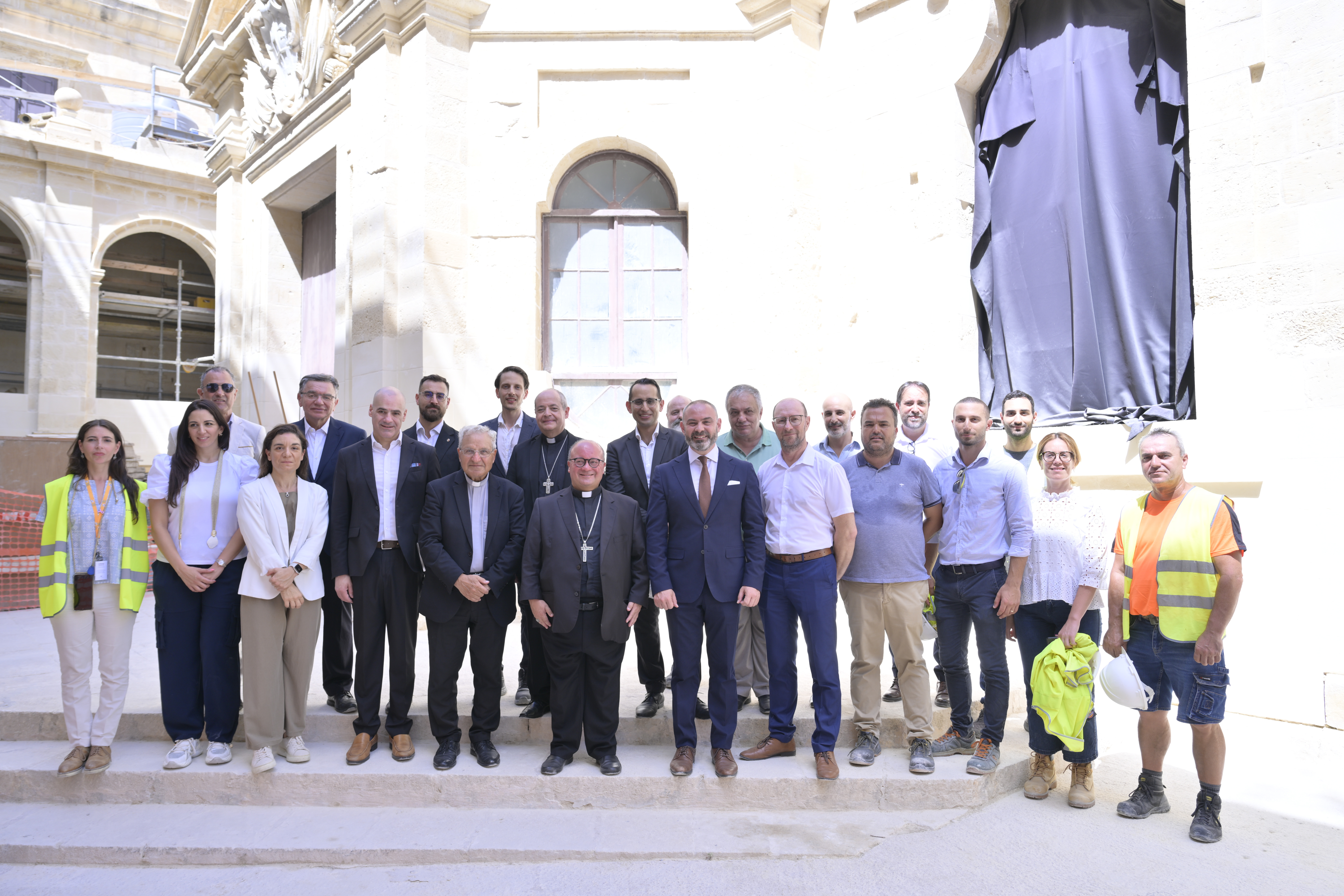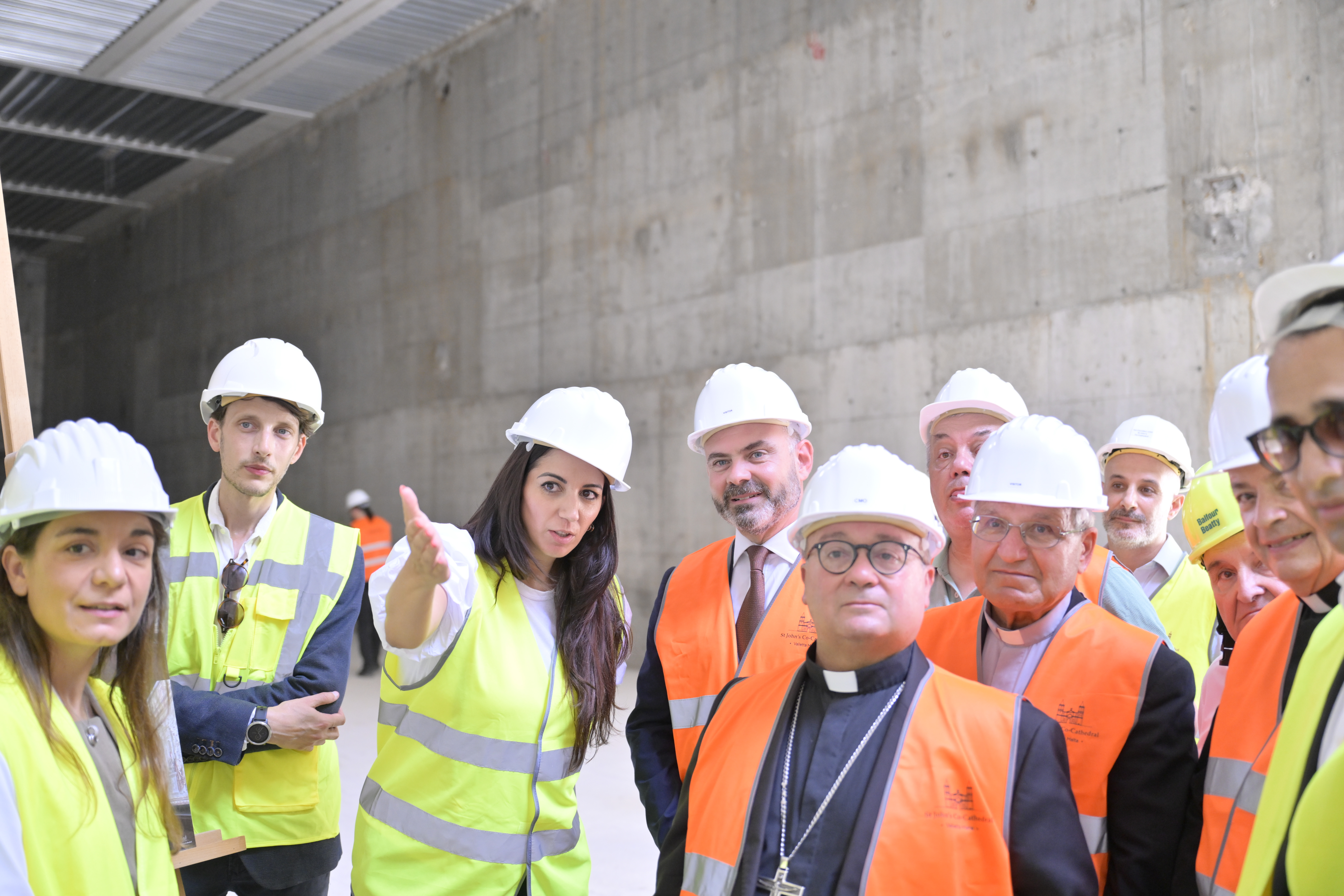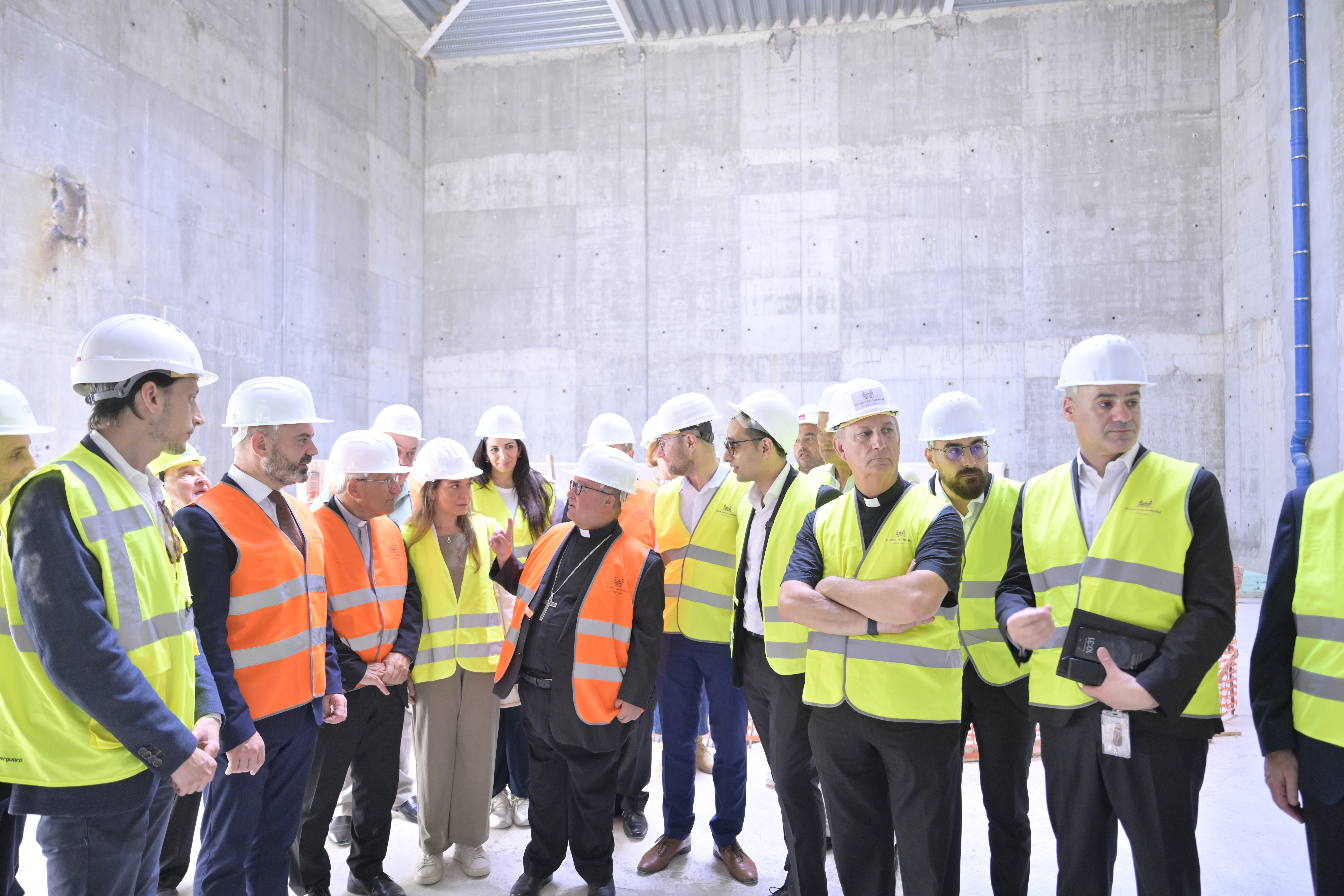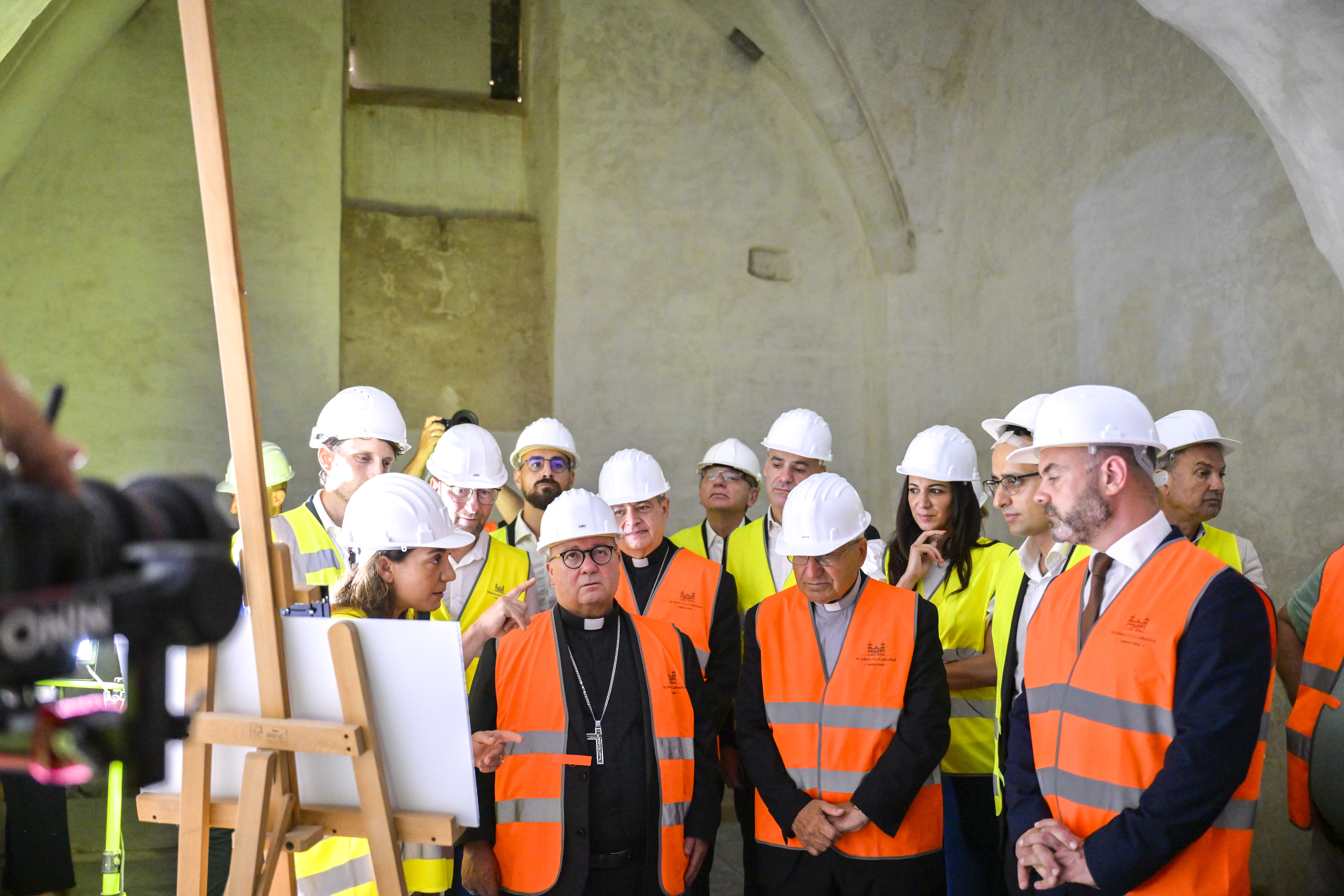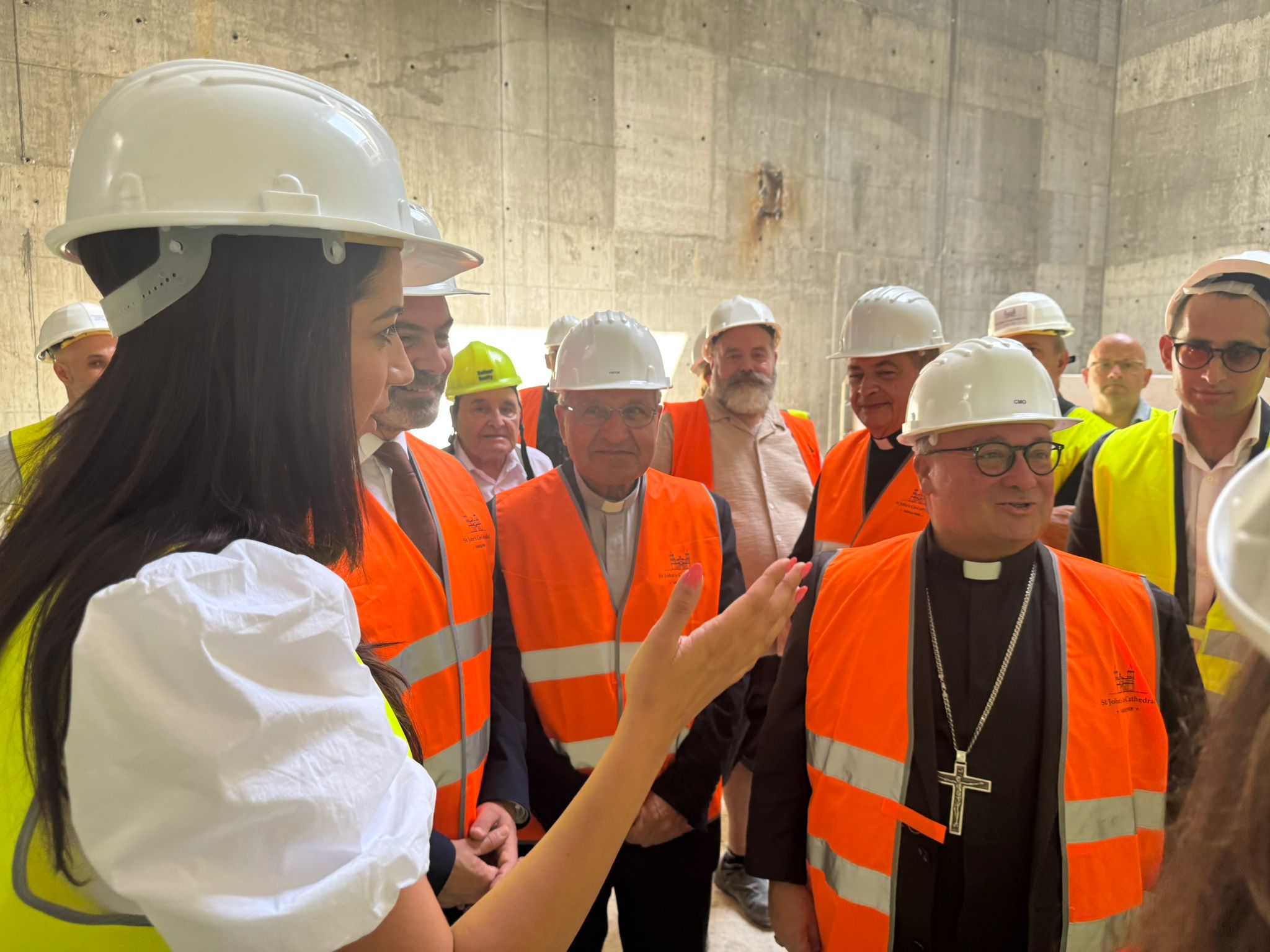St John’s Co-Cathedral Restoration Site Welcomes Archbishop Charles Scicluna and Minister Owen Bonnici
This week, His Grace Archbishop Charles Scicluna and Hon. Owen Bonnici, Minister for the National Heritage, the Arts and Local Government, visited St John’s Co-Cathedral in Valletta to witness the ongoing restoration works and view progress on the construction of the new museum that will house the cathedral’s historic Flemish tapestries, and rare artefacts from the silver collection, ornate vestments and 16th Century Choral Books.
The distinguished guests were welcomed and shown around by Ms Denise Xuereb, Director of Construction at AX Group, and Mr Fabio Billi, Restoration Manager at AX Construction. The visit provided an opportunity to appreciate the significance of this national heritage project and the meticulous efforts being carried out to preserve and enhance one of Malta’s most treasured sites.
AX Construction is responsible for a wide range of structural and restoration works on site, including the construction of the new museum wing, masonry restoration, upgrading of building services, and the installation of modern infrastructure to enhance accessibility, climate control, and fire safety systems. The new museum will provide an appropriate and dignified setting for the display and conservation of the unique tapestry collection, which is considered one of the largest complete sets of it’s kind in the world. Moreover, this project will give access to historic parts of the Co-Cathedral complex that have long been closed to the public, offering a richer, more immersive cultural experience.
H.G. Archbishop Scicluna expressed his gratitude for the ongoing efforts to preserve and enhance one of Malta’s most important religious and historical landmarks. He also remarked on the value of collaboration between the Church, government entities, private industry, and technical experts in safeguarding national heritage.
The project, entrusted to AX Construction and overseen by the St John’s Co-Cathedral Foundation, stands as a testament to the careful integration of modern construction methods within a historic context, ensuring that the legacy of this Baroque masterpiece is preserved for generations to come.
This project is part-financed by the European Union through the European Regional Development Fund (ERDF) 2021–2027.
